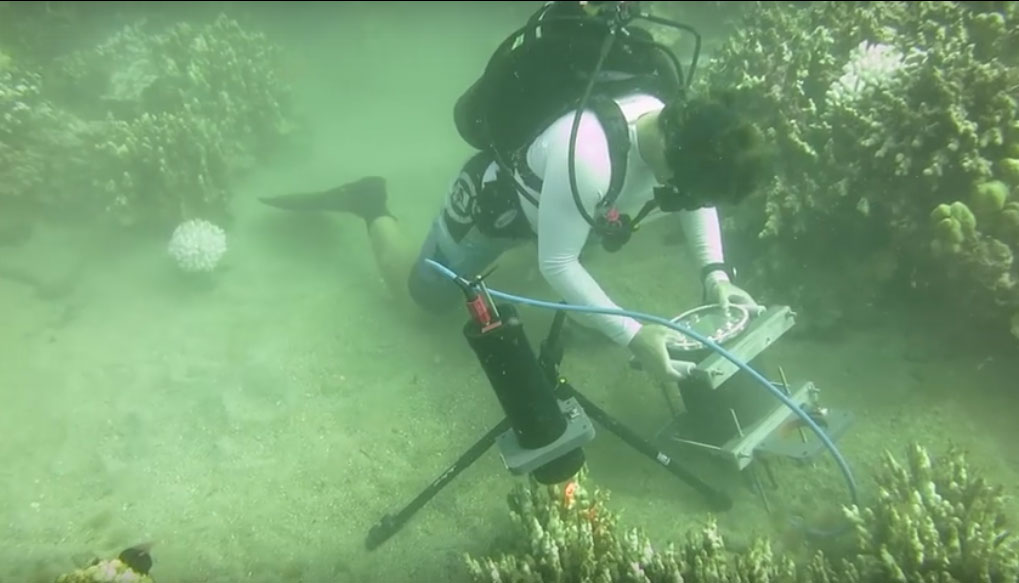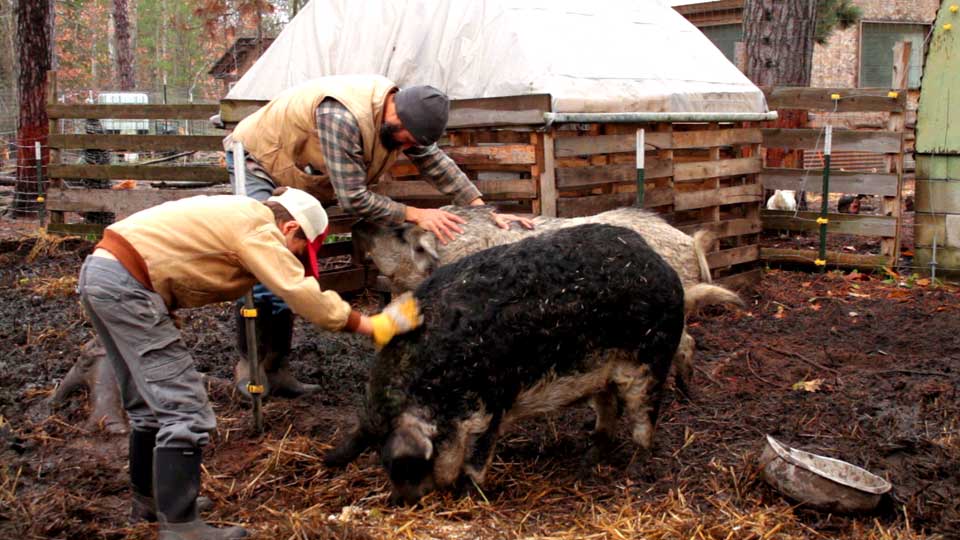Huge Increases in Wastewater Threaten Escanaba River
Citizens Speak Out Against Permit That Will Allow For More Wastewater Dumping By The Humboldt Mill and Lowering of Water Quality in Escanaba River.

Attorney Michelle Halley, who has worked extensively on Eagle Mine
issues, said, “This NPDES permit allows discharges to the Escanaba River
> > that do not protect the fishery. Because of that, it violates the Clean Water Act.” (photo courtesy of Save The Wild U.P.)
“It is profitable to let the world go to hell… the tyranny of the short term will prevail over the decades to come.” – Jørgen Randers
There’s a battle brewing behind the scenes here in the Upper Peninsula, threatening wild rivers, fish habitat, our ‘pure’ Michigan water supply and ultimately, the health of our communities.
Recently, concerned citizens gathered in the auditorium of the Westwood High School in Ishpeming, to attend a public hearing on the Humboldt Mill’s renewal draft of a National Pollutant Discharge Elimination System (NPDES) permit. Residents from across the Upper Peninsula gathered to discuss their concerns about increased wastewater discharges that would flow directly into the Escanaba River. The public hearing, held by the Michigan Department of Environmental Quality (MDEQ), drew supporters of the environmental organization Save the Wild U.P.(SWUP), members of the Keweenaw Bay Indian Community and the local residents of Humboldt Township.
Concerned citizens are raising the alarm over proposed increases in wastewater discharges to the Escanaba River watershed from the Humboldt Mill. Eagle Mine LLC, which runs operates the Humboldt Mill, is seeking a National Pollutant Discharge Elimination System (NPDES) permit that would allow them to greatly increase the amount of waste-water from their Humboldt Mill facility into wetlands that empty directly into the Escanaba River. While termed a reissuance, the draft permit actually includes substantial changes.
OK, you may say, what’s new — the Humboldt Mill site has been used for decades, right? Discharges have already been taking place. So why worry about stream monitoring now, or the fine points of setting limits for dangerous contaminants? The Humboldt Mill is currently under investigation by the EPA due to its potential status as a Superfund site, and legacy mine pollution at the Humboldt site may already be causing harm to ecosystems and the people who live there.
Environmental organization Save the Wild U.P. reminds us that it is never too late for residents to demand environmental accountability, especially where Eagle Mine and sulfide mining is concerned. If granted, the draft NPDES permit will allow for a 240% increase in wastewater discharges to the Escanaba River watershed from the Humboldt Mill. This outrageous increase — from .82 to 2.8 million gallons per day — combined with increased mass limits and increased concentration limits, means that exponentially more pollutants will be flushed into wetlands already suffering from historic pollution, and a river already impaired by PCBs and mercury.

Concerned citizens advocate to prevent the Humboldt Mill from dumping increased pollution into the Escanaba River in Michigan’s Upper Peninsula. (photo courtesy of Save The Wild U.P.)
During the summer of 2014, Eagle Mine – Humboldt Mill constructed a pipeline, without public comment or input, that will pump wastewater from the Mill’s water treatment plant to a point approximately 125 feet from the Escanaba River, dumping into a “wetland” that lacks any environmental impact assessment.
Due to the limited capacity of Humboldt’s water treatment plant, up to 50% of Humboldt’s wastewater discharges may bypass the treatment plant altogether, sending tailings water directly into the environment. The draft NPDES permit fails to mention numerous known parameters of concern, including: Aluminum, Antimony, Barium, Boron, Calcium, Chromium, Fluoride, Iron, Lithium, Magnesium, Molybdenum, Potassium, Silver, Sodium, Thallium, Tin, Titanium, Strontium, Sulfate, Vanadium, and Uranium.
Since it’s not possible to increase Humboldt Mill’s discharge and accompanying pollutants without degrading water quality, Eagle Mine is seeking an exemption to the Clean Water Act. According to the draft permit, Eagle Mine, states that “lowering of water quality is necessary to support the identified important social and economic development in the area.”
During MDEQ’s Public Hearing on the draft NPDES permit for Humboldt Mill, the Humboldt Township Board announced they were unanimously opposed to the permit. In the face of blatant disregard for the pollution of the watershed, flooded local properties, and concern for the health of our communities, it seems we — average Yoopers — must demand that regulators do their job. Steve Garske, a board member of Save the Wild U.P. and western U.P. resident, agrees. “The problem really boils down to a regulatory process focused on permitting rather than preventing pollution.”
Mining has been a part of the Upper Peninsula culture for decades. As local historian Jon Saari has reflected: mining may be our history, but it need not be our legacy. The resources of the U.P.’s mineral-rich land have been supplying the world with ores and our local population with livelihoods for generations — but at what cost?
If mining continues in the Upper Peninsula, we must insist that global mining corporations fully comply with environmental laws meant to protect all residents of the United States. “We know that our regulators aren’t enforcing the rules and are instead relaxing them to benefit multinational mining companies — threatening our clean water as well as our democratic process,” said Alexandra Maxwell, SWUP’s Interim Director.
If anything can be gleaned from the disheartening attempts by industry and regulators to circumvent the Clean Water Act and disregard the health of our communities, it is this: we must rise to the occasion ourselves. Increasingly, we are called to be watchdogs, monitoring the health of our environment, and demanding that our long-term interests are served.

Water quality of the Escanaba River in the Upper Peninsula of Michigan is being threatened by proposed pollution increases by Eagle Mine’s Humboldt Mill. (photo courtesy of Save The Wild U.P.)
A Few More Facts To Consider:
● “Ore being processed at the Humboldt Mill comes from Eagle Mine, containing valuable copper and nickel along with dangerous sulfides, salts, and a long list of toxic metals.” – Alexandra Maxwell, SWUP Interim Director
● Water monitoring at Eagle Mine (the source of the ore being processed at Humboldt) has documented more than 100 exceedances of groundwater discharge limits since Eagle Mine’s permit was issued in 2007, including serious exceedances of arsenic, copper, lead, molybdenum, silver, and vanadium
● Uranium levels in water at the Eagle Mine facility have risen to 103 ug/L, more than 3 times higher than the EPA’s Maximum Concentration Level
● “Our heritage isn’t lining the pockets of multi-national corporations – our heritage is resilience and solidarity in the face of terrible working conditions, absentee regulations, and an environment scarred by industrial litter on a grand scale. We at Save the Wild U.P. celebrate our ancestors and our heritage every day by standing up to some of the most dangerous and exploitative industries in the world.” – Ali Thebert, former director of Save the Wild U.P.
– written by Alexandra Maxwell, Kathleen Heideman, Erica McMillan
We hope you’re as concerned about this issue as we are! For more info or to get involved contact :
Phone: (906) 662-9987














You must be logged in to post a comment Login